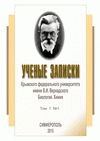In world agriculture, grain sorghum occupies 70-75 million hectares. Its grain is used to produce alcohol and alcoholic beverages, as human food and animal feed, etc. Growing agricultural crops requires an environmentally sound approach, which is ensured by the use of biotechnological techniques that promote the activation of the soil microbiome, optimization of mineralization processes and increased profitability of products in various conditions. The potential role of PGPR in imparting resistance to water stress, including the use of arbuscular mycorrhizal fungi with grain sorghum, has been studied. Direct seeding helps to preserve the agrophysical and biological properties of the soil. An integrated approach to the use of microorganisms and direct seeding in agriculture increases the overall biogenicity of soils and complements the methods for plant adaptation to water and temperature stress. The purpose of the work is to assess the water status of plants, the biological activity of the rhizosphere and the biomass of grain sorghum under the influence of a complex of microorganisms and various agrosystems in the conditions of southern chernozem. The assessment was carried out in a stationary field experiment to study the effect of the traditional farming system and direct seeding and the use of sorghum seed inoculation with a complex of microorganisms (CM) on the preservation of soil fertility. A stationary experiment to study the influence of farming systems and a complex of microorganisms (CM) on the preservation of the fertility of arable lands was established in 2015 on the experimental field of the Federal State Budgetary Scientific Institution “Research Institute of Agriculture of Crimea”. According to the conditions of the stationary experiment, a two-factor experiment was established: factor A is a traditional or resource-saving agrosystem, factor B is the presence or absence of inoculation with a complex of microorganisms (CM); with the following options: 1. Direct seeding (DS) without seed treatment with CM; 2. Direct seeding with seed treatment with CM (DS with CM); 3. Traditional system (TS) without seed treatment with CM; 4. TS – seed treatment with CM (TS with CM). The complex of microorganisms (CM) consists of strains of the Crimean collection(https://ckp-rf.ru/catalog/usu/507484/): Paenibacillus polymyxa (main function: protection against phytopathogens), Lelliottia nimipressuralis 32-3 (growth stimulation and phosphate mobilization), Agrobacterium radiobacter 204 (improving nitrogen nutrition) and the association of arbuscular mycorrhiza fungi Rhizophagus sp. P3. The parameters of plant water status and biological activity of the sorghum rhizosphere were selected: water deficit level, relative turgidity, grain biomass, peroxidase activity and rhizosphere carbon dioxide emission. Weather and climatic conditions were characterized by weak and moderate drought intensity in 2018 and 2020, respectively, and no drought in 2019. Based on the results of determining the water deficit, it was established: low – 2018 and 2019, and 2020 – medium degree of drought resistance of plants in all experimental variants. The effect of CM on the value of relative turgidity and water status in the field experiment was noted only in 2019 in the direct seeding variant towards increasing the saturation of cells with water and drought resistance of plants. The use of CM helps to optimize the functional activity of peroxidase enzymes and carbon dioxide emissions in the rhizosphere. Under the conditions of 2018 and 2020, a decrease in peroxidase activity and carbon dioxide emissions in direct seeding was found compared to the traditional system by up to 3.9 times and 1.4 times, respectively. On average, over the years of the study, the grain biomass in various farming systems was the same, while the use of CM contributed to its increase by 0.07 t / ha in the traditional system and 0.23 t / ha in direct seeding. Correlation analysis of the studied parameters in the active phase of plant growth showed similar relationships in 2018 and 2020 between the grain biomass of plants with peroxidase activity r = -0.74 and r = -0.67, respectively. The correlation between grain biomass and rhizosphere carbon dioxide emissions with r= -0.88 was revealed in a 2020 field experiment. The established correlations between the activity of rhizosphere peroxidases, carbon dioxide emissions and grain biomass indicate that the use of a complex of microorganisms helps to optimize the functioning of the native microflora, which is shown by the result of their vital activity (enzymatic activity) and the adaptation of plants to dry conditions. Thus, the integrated approach of using biotechnological and agrotechnological methods in growing grain sorghum promotes the adaptive work of the native microflora, which is demonstrated by the result of their vital activity (biological activity) and an increase in the biomass of plant grains under dry conditions.
Sorghum bicolor (L.) Moench; no-till; water deficit; carbon dioxide emission; peroxidase activity; grain biomass; correlation
1. Mohamed H. I. Sorghum: nutritional factors, bioactive compounds, pharmaceutical and application in food systems: A review / H. I. Mohamed, E. M. Fawzi, A. Basit, R. Kaleemullah Lone [et al.]
2. Zoteev V. S. Zernovoe sorgo v kormlenii laktiruyuschih korov / V. S. Zoteev, G. A. Simonov, A. K. Antimonov // Molochnoe i myasnoe skotovodstvo. – 2018. – № 7. – S. 34–38.
3. Syrkina L. F. Sorgo zernovoe kak vozmozhnyy istochnik syr'ya dlya pererabotki na krahmal i spirt / L. F. Syrkina, Yu. Yu. Nikonorova // Vestnik KrasGAU. – 2020. – № 10(163). – S. 95–100.
4. Uddin M. R. Herbicidal activity of formulated sorgoleone, a natural product of Sorghum root exudate / M. R. Uddin, S. U. Park, F. E. Dayan, J. Y. Pyon//Pest Management Science.–2014.– Vol. 70, No 2.– P. 252–257.
5. Shukla S. K. Deep Tillage, Soil Moisture Regime, and Optimizing N Nutrition for Sustaining Soil Health and Sugarcane Yield in Subtropical India / S. K. Shukla, R. L.Yadav, R. Gupta,A. K. Singh, S. K. Awasthi, A. Gaur
6. Aipova R. Biologicheskie preparaty v organicheskom zemledelii / R. Aipova, A. B. Abdykadyrova, A. A. Kurmanbaev // Biotehnologiya i selekciya rasteniy. – 2019. – № 2(4). – S. 36–41.
7. Suman J. Microbiome as a Key Player in Sustainable Agriculture and Human Health / J. Suman, A. Rakshit, S. D. Ogireddy, S. Singh, C. Gupta, J. Chandrakala // Frontiers in Soil Science. – 2022. – Vol. 2.
8. Volobueva O. The influence of biological products and growth regulators on the yield and quality indicators of pea seeds of various varieties / O. Volobueva, I. Seregina, S. Belopukhov, M. Grigoryeva
9. Venturi V. Signaling in the rhizosphere / V. Venturi, C. Keel // Trends in Plant Science. – 2016. – Vol. 21, No 3. – P. 187–198.
10. Andronov E. E. Analiz pokazateley pochvennogo mikrobioma v processah, svyazannyh s pochvoobrazovaniem, transformaciey organicheskogo veschestva i tonkoy regulyacii vegetacionnyh processov
11. Dubinina M. N. Rol' pochvennyh mikrobiologicheskih soobschestv v formirovanii agronomicheski cennoy vodoprochnoy struktury / M. N. Dubinina, V. A. Lyhman
12. Ha T. Z. Klyuchevoy stimulyator rosta rasteniy – rizobakterii / T. Z. Ha, A. V. Kanarskiy, Z. A. Kanarskaya [i dr.] // Vestnik Povolzhskogo gosudarstvennogo tehnologicheskogo universiteta.
13. Chernyh E. P. Vliyanie ekologicheskih faktorov i perioda vegetacii na soderzhanie biologicheski aktivnyh veschestv v nekotoryh vidah rastitel'nogo syr'ya Krasnoyarskogo kraya / E. P. Chernyh
14. Kumar P. G. In vitro Screening for Abiotic Stress Tolerance in Potent Biocontrol and Plant Growth Promoting Strains of Pseudomonas and Bacillus spp. / P. G. Kumar, S. K. Mir Hassan Ahmed, S. Desai,
15. Lebedev V. N. Ocenka effektivnosti obrabotki semyan kapustnyh kul'tur associativnymi rizobakteriyami v usloviyah normal'nogo uvlazhneniya i pochvennoy zasuhi / V. N. Lebedev,
16. Abdurashitov S. F. Roststimuliruyuschiy effekt simbioticheskih mikroorganizmov na sorgo pod deystviem vododeficita / S. F. Abdurashitov, K. S. Gricevich, A. I. Alekseeva, E. R. Abdurashitova
17. Nosheen A. Pseudomonas putida improved soil enzyme activity and growth of kasumbha under low input of mineral fertilizers / A. Nosheen, H. Yasmin, R. Naz, A. Bano, R. Keyani, I. Hussain // Soil Science and
18. Zinchenko M. K. Fermentativnaya aktivnost' agrarnyh pochv Verhnevolzh'ya / M. K. Zinchenko, S. I. Zinchenko, A. A. Borin, O. P. Kamneva // Sovremennye problemy nauki i obrazovaniya –
19. Haziev F. H. Funkcional'naya rol' fermentov v pochvennyh processah / F. H. Haziev // Vestnik akademii nauk RB. – 2015. – T. 20, № 2(78). – S. 14–24.
20. Dragan N. A. Pochvennye resursy Kryma / N. A. Dragan. – Simferopol': Dolya, 2004. – 208 s.
21. Karta pochv Rossii [Elektronnyy resurs]. – Rezhim dostupa: https://soil-db.ru/map?lat=45.5541&lng=35.5408&zoom=9&feature=35693. – Data obrascheniya: 22.03.2025.
22. Strashnaya A. I. Avtomatizirovannaya tehnologiya monitoringa i rascheta kolichestva dekad s pochvennoy i atmosferno-pochvennoy zasuhoy pod zernovymi kul'turami / A. I. Strashnaya,
23. Praktikum po fiziologii rasteniy / Pod red. N. N. Tret'yakova, T. V. Karnauhovoy, L. A. Panichkina. – 3-e izd., pererab. i dop. – M.: Agropromizdat, 1990. – 271 s.
24. Goncharova E. A. Vodnyy status kul'turnyh rasteniy i ego diagnostika / E. A. Goncharova; pod red. V. A. Dragavceva. – SPb.: VIR, 2005. – 112 s.
25. Gricaenko Z. M. Metodi bіologіchnih ta agrohіmіchnih doslіdzhen' roslin ta ґruntіv / Z. M. Gricaenko, A. O. Gricaenko, V. P. Karpenko. – Kiїv: ZAT «NІChLAVA», 2003. – 320 s.
26. Metodicheskie rekomendacii po ocenke toksicheskogo deystviya pesticidov na mikrofloru pochvy / pod obsch. ruk. Yu. V. Kruglova. – M., 1981. – 43 s.
27. Dospehov B. A. Metodika polevogo opyta / B. A. Dospehov. – M.: Agropromizdat, 1985. – 351 s.
28. Tuev N. A. Mikrobiologicheskie processy gumusoobrazovaniya / N. A. Tuev. – M.: Agropromizdat, 1989. – 239 s.
29. Denef K. Influence of dry–wet cycles on the interrelationship between aggregate, particulate organic matter, and microbial community dynamics / K. Denef, J. Six, H. Bossuyt, S. D. Frey





